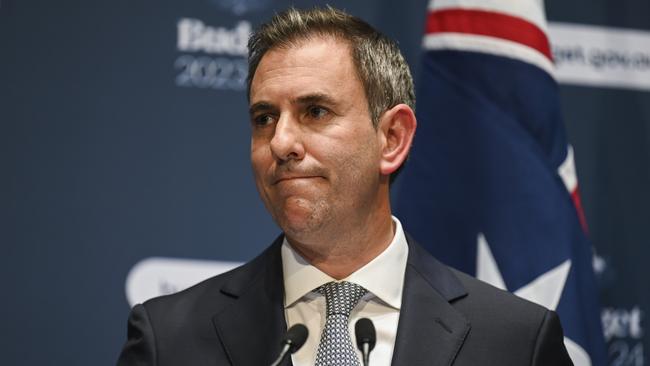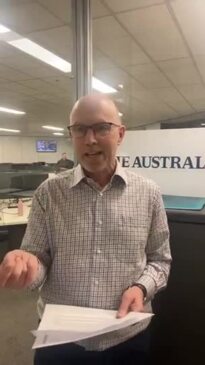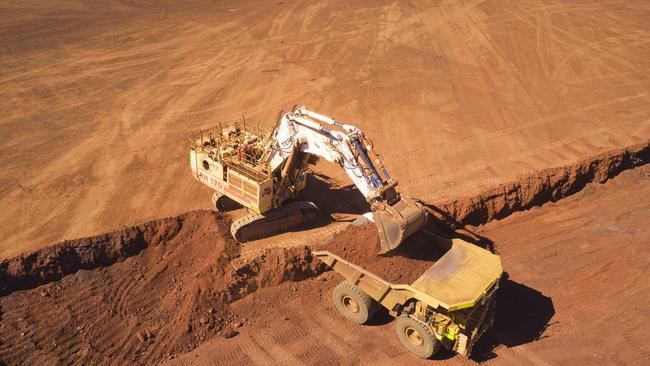
1. Super tax rise
The government’s plan for a new 15 per cent tax on super earnings over a $3m threshold will raise almost about $2.3bn in the first full year of receipts to the government.
What’s more, the government has offered no indication whatever if it is willing to vary the terms of this new tax – which will include “unrealised gains’. As we stand, there is no suggestion that disability insurance payouts will be exempted or that Australians living overseas will be treated any differently than citizens residing in the country.
Despite a Treasury review of the issue which concluded on April 17, confusion reigns around how the tax will be introduced in practice. The government has promised to release draft legislation in the near future to throw light on key issues, including how unrealised gains and losses will be treated.
2. Tax debts crackdown
Anyone who owes more than $100,000 for over two years in relation to super will be in the sights of a new crackdown by the Australian Taxation Office. The move is for personal tax and super – but it will be seen as yet another policing move upon the Self-Managed Superannuation Fund sector
The government also continues a long tradition of extending funding to anything that might bring in more tax – there also is more money for expanding the general anti-avoidance rule in the income tax area.

3. Your personal tax cuts are coming
The government has left a lot unsaid in this budget, including its implicit decision to stick with the planned personal tax cuts. The stage three cuts which are due to start on July 1, 2024 are now on target – those tax cuts will be aimed at Australians on higher incomes.
The important change in this new tax table will be the raising of the upper threshold for the 30 per cent tax rate from $120,000 to $200,000 and removing the 37.5 per cent tax band entirely. On top of that, the 45 per cent lower threshold will move from $180,000 to $200,000.
However, the top rate of tax in our tax system will still be a lofty 45 per cent, and that’s before you add the Medicare levy.

4. Housing help
Despite an unprecedented rental crisis and the increasing difficulty of buying a house for the average salary earner, the government has offered very little – other than improved rent relief.
For aspiring homeowners, the already flagged widening of the First Home Guarantee scheme where there can be multiple names on an application is a useful -if modest – improvement.
The scheme specifically helps buyers pull together a deposit for a first home with the government guaranteeing up to 15 per cent of a loan – it means the potential homebuyer gets to have a deposit acceptable to the banks, and they also avoid having to pay deposit insurance.
5. Rent crisis moves
One of the biggest single measures in the budget papers is rent relief, the increase in the Commonwealth Government Assistance program by 15 per cent – which works out at $31 per head a fortnight. The rent assistance changes means the ability of lower income tenants throughout the market to pay rent on time will be improved. In a market dominated by private investors, it also means there will be less risk of evictions.
However, in terms of changing the dynamics of the property market where there is simply not enough to rent – the only measure of note is an already flagged improvements in tax deductions for build to rent developers.
In short, the one per cent vacancy rates in the major cities will remain in place.
6. Inflation is here to stay
Every investor or salary earner is facing the prospect of eroding income due to what the Treasurer calls ‘persistent high inflation … the central challenge of our economy’.
Even if we allow that the major social welfare programs signed off in the year’s budget are not inflationary- as the government claims, and economists dispute – inflation is going to hang around. The official forecast is that inflation moves from 6 per cent this year to 3.25 per cent next year and lower again the year after – this is, as an ‘ambitious’ forecast.
For investors, the message is that inflation-proofing your investments remains crucial. In effect, it means income streams need to beat inflation. Wealth advisers suggest listed companies that can muster dividend increases -not just recurring dividend payments – will reward investors. Best of all will be investments that are inflation linked, such as transport or airport stocks with a built-in ability to put through price increases.
7. Iron ore – stronger for longer
Iron ore is riding high again – that always good news for iron ore stocks BHP, Rio, and Fortescue – along with an upbeat outlook for the tax revenue the government can gain from these giant players in the resources industry.
Treasury has used an assumed iron ore price of $US55 a tonne for decades – the assumption is very conservative and has occasionally been absurd when iron ore prices hovered near $US200. Research by PwC indicated the actual price of iron ore over the last twenty years has been $US85 a tonne – and if the government put that assumption into the budget papers it would generate more than $6bn over the forward estimates. As it turned out, the government pushed the assumption up by $US5 to $US60 a tonne and extended the time frame of that assumption by six months. It means forecast revenue will be a little better than previously, but windfall gains remain on the horizon. At the same time, it also suggests the most conservative player in the iron ore game-Treasury – just got a little more confident about the long term resilience of the iron ore price.

8. Older Australians assistance
A significant portion of the government’s signature moves in welfare will go towards older Australians. The government has moved to improve all Jobseeker payments by $40 a fortnight, but it has also specifically improved the terms for Australians between the age of 55 and 60 – allowing them to now be entitled to the higher single Jobseeker payment.
In case you missed, there is also big money flowing through to co-operation in the medical system – a tripling of bulk billing incentives, expanded capacity for prescriptions and the very large move to improve pay in the aged care sector where there will be a 15 per cent pay rise for a worker at a cost of more than $11bn over four years.
9. Money flow towards renewables
Investors might have made big money last year from oil and coal investments, while ‘green’ investment lagged behind in terms of returns.
But if you believe in ‘follow the money’ as a useful axiom for the everyday investor, this budget shows the way. Money is literally pouring money onto the renewables sector. The budget includes $438m for a certification program for clean energy products and a $5m clean energy skills plan. But the standout measure is a chunky $2bn Hydrogen Headstart plan to make Australian a global leader in Hydrogen ‘ as competition for clean energy investment accelerates around the world’.
Meanwhile, money flows away from Fossil Fuel. The government has moved to hit the fossil fuel industry in a pincer movement. There is a direct extra tax on the gas sector which is expected to bring in a whopping $2.4bn over 4 years.
Moreover, the big ticket energy prices relief program is linked to recipients moving towards cleaner energy – the giant $3bn energy bill discounts program (funded 50-50 with the states) includes a string of green incentives where Australians are rewarded for moving towards more energy efficient equipment.
10. Rich pickings
A major item not to be found in the budget papers is the application of inflation indexing to a range of schemes and taxes. With inflation running at 7 per cent, one of the biggest moves this year is that the amount you can have in super tax-free will move from $1.7m to $1.9m from July 1 this year.
Also on the upside, for super investors – the government has finally found a solution to the notorious ‘arms lengths rules’. Under the new plan, expenditure incurred by SMSFs will have income limited to twice the level of a general expense.
And finally, Defined Benefit Pensions are nearly in the loop for higher super tax;
The government has been stretched to find a way to include the lucky members of defined benefit schemes in its new higher tax for wealthy super savers – the difficulty is to find a formula that will be fair, and to include both pre-retirement and post retirement issues. Deep in the budget papers, the movement has hinted it will be using the ‘valuation method’ – a calculation already in use across the pension sector.








Treasurer Jim Chalmers expects the budget to be back in the black for the first time in 15 years, with a modest surplus of about $4bn this financial year. Here are the 10 items every investor needs to know.